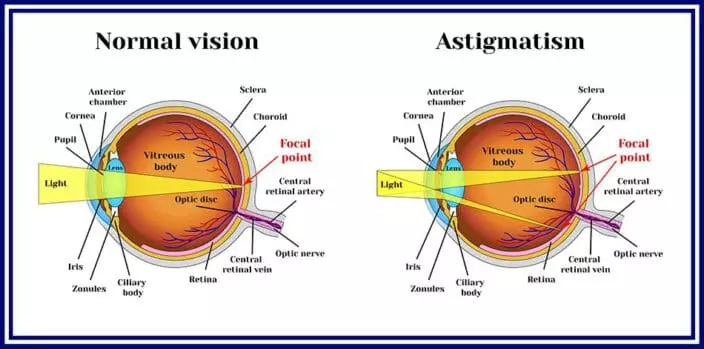Are you confused by your eye prescription? Do terms like astigmatism, nearsightedness, or farsightedness leave you perplexed? Understanding your eye prescription is crucial for taking care of your eyes and making informed decisions when buying new contact lenses or glasses.
Decoding the Terms in Your Eye Prescription
When you receive your eye prescription, you may notice terms like OD and OS. These refer to the right and left eye, respectively. There may also be a mention of OU, which means both eyes. While Latin terms like these are standardized, some doctors and clinics may use modern expressions like RE for the right eye and LE for the left eye.
 When an optometrist fills out a prescription, the prescription chart will have a column for your right eye before the left eye. This is because when the doctor faces you, they will see your right eye on their left, and your left eye on their right, as they move across your face.
When an optometrist fills out a prescription, the prescription chart will have a column for your right eye before the left eye. This is because when the doctor faces you, they will see your right eye on their left, and your left eye on their right, as they move across your face.
Understanding Sphere and Diopters
The sphere (SPH) measurement on your prescription indicates the strength of the required lens. It is measured in diopters (D) and adjusts for nearsightedness or farsightedness. A negative sign (-) indicates nearsightedness, while a positive sign (+) indicates farsightedness. The further the number is from zero, the weaker your eyes are and the greater vision correction (stronger prescription) you need.

Dealing with Astigmatism
Astigmatism is a common vision condition that causes distorted or blurry vision. It occurs when light refracts differently on your retina. Your prescription will account for astigmatism by including a cylindrical (CYL) measurement. If there is no CYL entry, it means you either have no astigmatism or it is too minor to require correction.
Understanding the Axis
The axis column on your prescription represents the lens meridian that does not have any cylinder power to correct astigmatism. The axis is expressed as a number from 1 to 180, with 90 representing the vertical meridian and 180 representing the horizontal meridian.
Additional Measurements and Recommendations
Your eye prescription may include additional measurements like ADD, which is the added magnifying power for addressing presbyopia. It may also mention prism diopters (PD), which compensate for eye alignment issues. Your doctor may also provide specific recommendations for coatings or lens types.
How Often Should You Get a Prescription Test?
It is recommended to have a comprehensive eye exam annually, especially as you get older. Regular evaluations become more important to detect conditions like glaucoma and cataracts. Most vision insurance plans cover annual eye checkups and provide coverage for new glasses or contact lenses every two years.
The Consequences of Wearing the Wrong Prescription
Wearing glasses or contact lenses with an inaccurate prescription can cause eye strain, blurry vision, and headaches. It can also affect your daily activities, making it difficult to read signs or use electronic devices. If you notice any discomfort or changes in your vision, it's time to visit your eye doctor.
Your Prescription and Your Rights
After an eye exam, your optometrist is legally required to provide you with a copy of your prescription at no additional cost. You have the freedom to purchase your eyewear from any vendor of your choice. Additionally, doctors cannot disclaim liability for the accuracy of the prescription if you choose to buy eyewear elsewhere.
Remember, this article is meant to provide general information and should not replace advice from a doctor or specialist. Take care of your eyes and prioritize regular eye exams for optimal vision health.
To learn more, read our Privacy Policy and Editorial Policy pages.

















